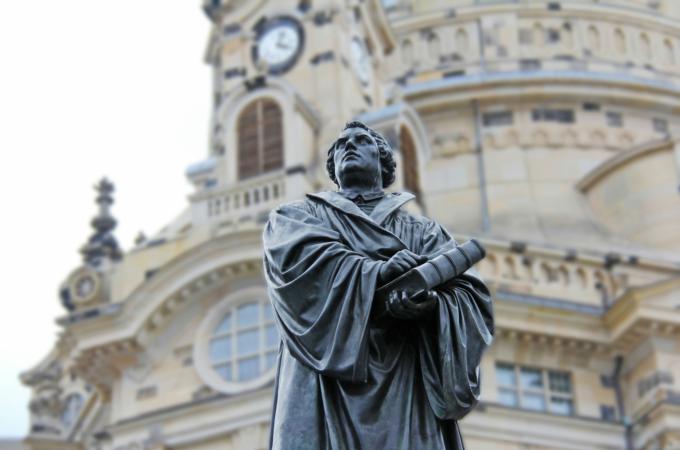A layman's guide to the history of Church reform
Yale University Press has just published a magnificent survey of Christian history entitled "Reformations: The Early Modern World, 1450-1650" by the Yale historian Carlos M. N. Eire. This Halloween will begin the quincentenary (500th anniversary year) since Luther promulgated his famous 95 Theses on Oct. 31, 1517, and inaugurated the critical crack in Christendom between Catholic and Protestant (whether Lutheran, Calvinist, Anglican or more radical Anabaptists and others).
The pope is traveling to Sweden to commemorate the event, which had and has monumental implications for European and American and indeed world history. Another recent history published by Harvard University Press entitled "The Unintended Reformation: How a Religious Revolution Secularized Society," by University of Notre Dame historian Brad S. Gregory, argues convincingly that what began as a movement for religious reform ended up in the secularism that characterizes modern society, together with the triumph of consumerism.
So if you want to understand how we got where we are, these are two crucial resources: how the beliefs and values and social ties of a comparatively religiously homogeneous Europe in the Middle Ages morphed into the pluralistic and desacralized and technological and relativistic culture we now have, and at what price in terms of blood and sacrifice. Consideration of this history can make us take stock of what was lost and what was gained. For example, one of the consequences of the wars of religion that characterized the 16th and 17th centuries was an appreciation for the values of religious toleration and even religious freedom. Indeed, this represented a return to the predominant view of the Church Fathers in their abhorrence of violence ostensibly placed in the service of religion.
One of the many virtues of Eire's book on "Reformations" is that it focuses as much on the changes that took place on the Catholic side as those that took place on the Protestant side (thus the plural in the title). What used to be called the Counter-Reformation was not just a reaction to the Protestants. It represented a positive reform in its own right: the many saints like St. Teresa of Avila, St. Philip Neri (Apostle of Rome), St. Francis Xavier and the missionary effort in Asia, Africa and the Americas; the Council of Trent's attacking various abuses like the holding of various Church offices at one time by absentee clerics; the new religious orders like the Jesuits; the flourishing of Baroque art, architecture and music (typified by the new St. Peter's Basilica, whose building had provoked Martin Luther into objecting to the sale of indulgences).
This affirmation of mysticism along with the cult of the saints, the mediation of ordained priests, the symbolic value of images and the centrality of the Holy Sacrifice of the Mass all represented the Catholic answer to the challenges posed by Protestant insistence on Scripture alone (rather than along with tradition), faith alone (rather than faith accompanied by works), and grace alone (not human freedom). At the same time, of course, one should recognize that Protestant insistence on the Bible and on preaching the Word of God led to a comparative high biblical literacy and quality of preaching in the Protestant world, including Puritan Massachusetts.
At the risk of gross oversimplification, my impression is that the Protestants were generally right in what they affirmed, but generally wrong in what they denied. Many Catholics at the time reacted defensively and violently (for example, Queen Mary I, the Catholic daughter of Henry VIII and Catherine of Aragon, the "Bloody Mary" of English legend). There was violence on both sides. Of course, sacred Scripture, faith and grace are all of primary importance to living Christianity. But Church authority, human works and human freedom are also important dimensions of living a godly Christian life. In practice, of course, many Protestants accepted this but disagreed with Catholics and with fellow Protestants about specifics.
Today, since the overriding challenge facing all Christians is the aggressive secularization of society and culture, and unprecedented persecution proceeding from certain fanatical Islamists and others, we must realize, as Pope Francis recently told a large group of Lutherans visiting Rome, "Beyond the many open questions that still separate us, we are already united. What unites us is much more than what divides us!"
- Dwight G. Duncan is professor at UMass School of Law Dartmouth. He holds degrees in both civil and canon law.



















